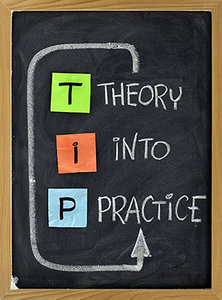Some speakers and writers on matters of interest to chiropractors have taken to announcing a conclusion and then offering a list of references in support of it. In some circumstances, there is nothing wrong with this; if, for instance, the author has undertaken a competent critical appraisal of a topic (included in the commentary), or is reporting the results of a systematic review of randomized, controlled trials on an intervention, or of cross-sectional surveys assessing the prevalence of a condition, such as headache. In most other circumstances, however, we are misled if we accept such assertions.
An Illuminating Example
In 1979, the original inventor of the defibrillator, Dr. Bernard Lown, revealed in an address to the American College of Cardiology that one of the most common causes of death in young and middle-aged men was heart attack. Why? Because after the attack, such people often developed cardiac arrhythmia and died. Plausibly, he suggested a safe and long acting anti-arrhythmia drug that protects against ventricular fibrillation would save many millions of lives.
Shortly thereafter, the eminent (EBP should not mean "Eminence Based Practice," but all too often does) New England Journal of Medicine (NEJM) published a study on a new drug called flecainide, a local anesthetic derivative that suppressed cardiac arrhythmias. Patients who had just suffered heart attacks randomly received placebo or flecainide, and were then switched from one to the other (a crossover trial – an extremely powerful trial design). Investigators counted the number of pre-ventricular contractions (PVCs) as a measure of arrhythmias. Those taking flecainide had fewer PVCs than the patients on placebo, and when they "crossed over" to the placebo, their PVCs increased again.
 The conclusion was straightforward: Flecainide reduces arrhythmias and arrhythmias cause heart attacks (the mechanism), so people who had experienced heart attacks should be given flecainide. The results were published in NEJM, and the drug was approved by the Food and Drug Administration and became standard treatment for heart attack victims in the U.S. (It did not catch on in Australia or Europe.)
The conclusion was straightforward: Flecainide reduces arrhythmias and arrhythmias cause heart attacks (the mechanism), so people who had experienced heart attacks should be given flecainide. The results were published in NEJM, and the drug was approved by the Food and Drug Administration and became standard treatment for heart attack victims in the U.S. (It did not catch on in Australia or Europe.)
Mechanism vs. Outcome
Almost immediately following the first trials, other investigators started gathering survival data (the outcome), rather than the PVC rate (the mechanism), which revealed that over the 18 months following treatment, more than 10 percent of patients given flecainide died – double the rate of the placebo group. Despite a perfectly plausible conclusion about mechanism, the drug was clearly toxic and did much more harm than good. Unfortunately, it was a long time before the poor outcomes data was accepted (most experts were happy 15 years ago to accept the initial paper and were not so aware of the dangers of management not based on outcomes studies) and tens of thousands of unnecessary deaths resulted. American cardiologists were systematically killing their patients for want of a little more understanding of the nature of the research enterprise and its reporting.
What We Can Learn
We can learn from this catastrophe. Mechanistic commentary or even research, or plausible hypothesis, can never suffice for outcome research.3 We must be ambitious in theory, but cautious in claim. And never stop thinkin.' Thanks for thinking with me!
Editor's Note: This is the first in a short series of articles by Dr. Charlton focused on different aspects of research as applicable to clinical practice.
References
- Anderson JL, Stewart JR, Perry BA, et al. Oral flecainide acetate for the treatment of ventricular arrhythmias." NEJM, 1981;305:473-77.
- Echt DS, Liebson PR, Mitchell LB, et al. Mortality and morbidity in patients receiving ecainide, flecainide, or placebo. The Cardiac Arrhythmia Suppression Trial. NEJM, 1991;324:781-8.
- Glasziou P, Del Mar C, Salisbury J. Evidence Based Medicine Workbook. London: BMJ Publishing, 2003.
Dr. Keith Charlton, a 1975 graduate of National College of Chiropractic, practices in Brisbane, Queensland (Australia). Over the years, he has held membership in various chiropractic associations and been active on a political level, including serving as president of the Queensland Branch of the Chiropractors' Association of Australia, during which time he helped secure legislative recognition for the profession in Queensland. He is a member of the editorial boards of Chiropractic & Osteopathy and the Journal of Chiropractic Humanities, and previously served on the boards of several other peer-reviewed journals including JMPT and the Chiropractic Journal of Australia.




